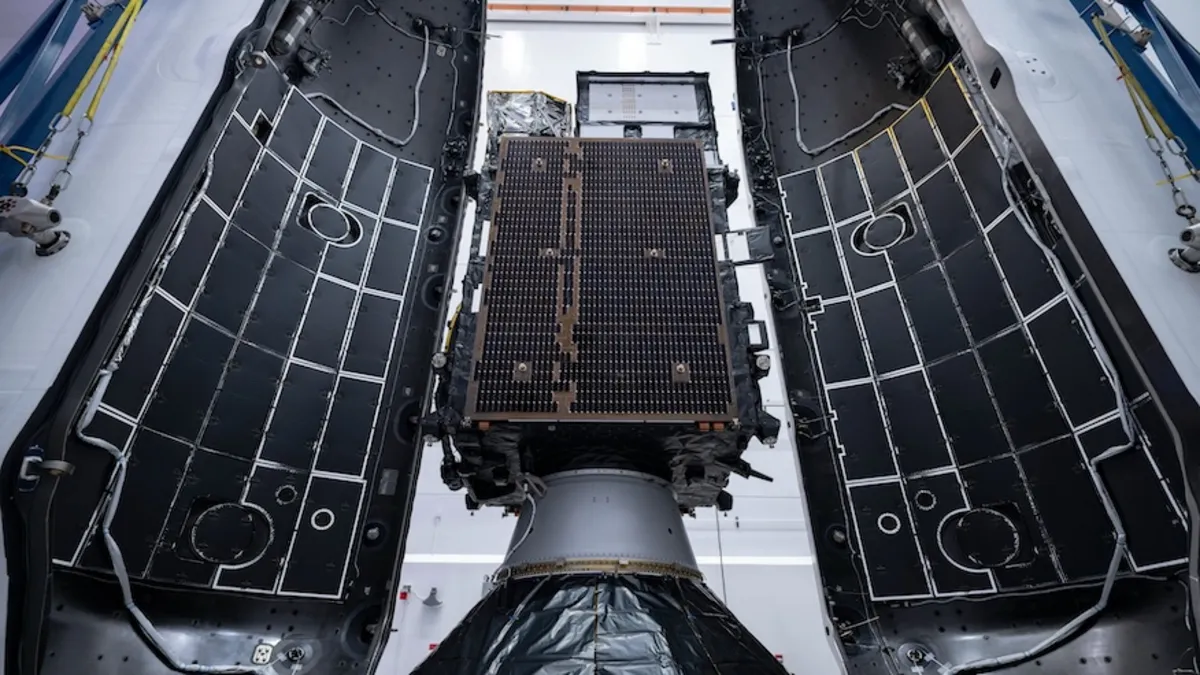
A European satellite designed to enhance both weather monitoring and assessments of air quality and pollution across Europe and North Africa is gearing up for its launch from Florida this Tuesday evening. The Meteosat Third Generation Sounder (MTG-S1) satellite will be deployed aboard a SpaceX Falcon 9 rocket, which will propel the satellite into a geosynchronous transfer orbit. This strategic positioning will enable the spacecraft to function within a geostationary Earth orbit, approximately 36,000 kilometers (about 22,369 miles) above the equator.
The mission is scheduled to lift off from Launch Complex 39A at NASA’s Kennedy Space Center at 5:03 p.m. EDT (2103 UTC) on Tuesday, July 1. Spaceflight Now plans to provide live coverage starting about one hour before liftoff. However, there is a chance that poor weather conditions along Florida’s Space Coast may delay the launch. The 45th Weather Squadron predicts only a 20% and 10% chance of favorable weather for the primary and backup launch dates, respectively, due to a storm system referred to as Disturbance 1.
This storm system has less than a 20% chance of developing into a cyclone over the next seven days. Launch weather officers noted, “The subtropical ridge axis should remain south of the port for the next several days, bringing a high chance of afternoon and evening thunderstorms for both the primary and backup days.” They added that thunderstorm activity is likely to peak during the launch windows, which may result in only brief periods of favorable weather conditions.
SpaceX will utilize the Falcon 9 first stage booster, designated B1085, for this mission. This will mark its ninth flight, following previous missions including NASA’s Crew-9, Fram2, and Firefly Aerospace’s Blue Ghost Mission 1. Approximately 8.5 minutes after liftoff, B1085 will aim for a landing on the droneship named ‘Just Read the Instructions’. If successful, this will be the 127th landing for this vessel and the 471st booster landing overall.
The MTG-S1 satellite is expected to separate from the Falcon 9 rocket’s second stage around 35 minutes post-liftoff, with signal acquisition to follow shortly thereafter. The satellite will then embark on a transfer period of approximately 17 days to reach its operational orbital position. James Champion, the project manager for the European Space Agency (ESA), expressed excitement about the upcoming mission, stating, “We can’t wait to get it up there and start operating it.”
Following the launch and early operations phase, which will be managed by a team from Telespazio in Fucino, the satellite will enter a commissioning period lasting around 9 to 12 months. During this time, the satellite's instruments will be calibrated to ensure the delivery of high-quality data. Champion noted that while much calibration has been conducted on the ground, additional fine-tuning will be required once the satellite is operational.
The primary payload of the Falcon 9 rocket is the MTG-S1 satellite, which was transported by barge from its construction site to Cape Canaveral on April 23, 2025. This satellite represents Europe’s first hyperspectral sounding instrument placed in geostationary orbit, enabling it to survey specific areas every 15 minutes and provide continuous weather data to meteorologists.
The MTG-S1 is the second satellite in a series of six developed by the European Organisation for the Exploration of Meteorological Satellites (EUMETSAT) in collaboration with ESA. These satellites will operate in pairs, consisting of one sounder and two imagers. The first imager, MTG-I1, was successfully launched on December 13, 2022, and the second imager, MTG-I2, is planned for launch in 2026. Each satellite is designed for a nominal operational life of 8.5 years, with enough fuel for missions extending beyond 10.7 years.
Thales Alenia Space and OHB System AG were selected as the prime contractors for the MTG constellation, with a contract valued at nearly $1.8 billion. The delays in launching these satellites were attributed to the need for further technology development and unforeseen risks, as noted by Champion. The MTG-I satellites are equipped with 16 spectral channels, designed to deliver detailed vertical profiles of atmospheric temperature and humidity.
On June 17-19, teams loaded propellant onto the MTG-S1 satellite at the Astrotech Space Operations facilities in Titusville, Florida. The satellite is fueled with approximately 2 tonnes (around 4,409 lbs) of fuel and oxidizer, with a wet mass of about 3.8 tonnes (approximately 8,378 lbs). Champion emphasized the importance of managing thermal deformation and vibrations to ensure the satellite's instruments function optimally.
The primary goal of the MTG-S1 sounder, in conjunction with the imagers, is to provide vital data to improve responses to severe weather events. Champion highlighted the significance of this data, stating, “The amount of severe weather events that the sounder data will help is going to be immense. With more accurate and timely warnings, decision-makers will be better equipped to respond effectively.”
Alongside the MTG-S1 satellite, the Copernicus Sentinel-4 instrument will also be onboard. This ultraviolet, visible, near-infrared (UVN) spectrometer will collect hourly data on pollution and air quality. It is designed to measure light reflected from the Earth and its atmosphere, as well as light from the Sun, to capture signatures of trace gases such as formaldehyde, nitrogen dioxide, and ozone.
Giorgio Bagnasco, ESA’s Sentinel-4 project manager, described the instrument as a “scientific marvel,” capable of detecting pollution patterns in near real-time from 36,000 kilometers away. He noted, “It’s like spotting a needle in a haystack – from space.” The Sentinel-4 instrument represents a new collaboration between EUMETSAT and the European Commission, with operational aspects being managed by EUMETSAT.
As preparations continue for the launch of the MTG-S1 satellite, its advanced capabilities are set to significantly enhance weather forecasting and air quality monitoring in Europe and North Africa, paving the way for improved public safety and environmental protection.